Hair Transplant Dallas with SmartGraft®
Recent advances in hair transplants have revolutionized the field of hair restoration, offering hope and effective solutions to those experiencing hair loss.
Technological innovation and medical advancement have transformed a once rudimentary procedure with unnatural results into one of the most comprehensive and least invasive solutions to hair loss in both men and women.


A TEAM YOU CAN TRUST
Dr. Baker’s team has 14+ years of experience with over 3,000 hair transplants successfully completed, including VIPs, celebrities, and royal family members.
A Natural and Permanent solution to Hair Loss
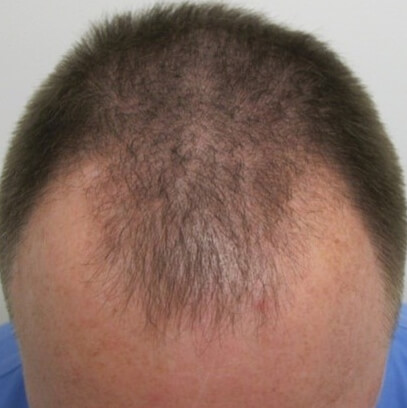
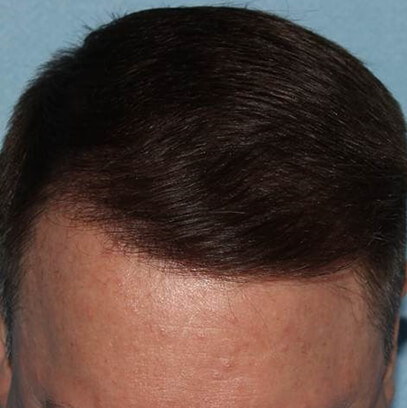
Hair loss affects a growing number of men and women of all ages, SmartGraft® is a minimally invasive solution that uses expert harvesting and implantation of each hair follicle with modern technology to leave natural results and can be applied to hair loss in other areas like eyebrow hair transplants, beard transplant and more.
ENQUIRE ONLINE
Using this form to make an enquiry, this is the fastest way to ensure your enquiry reaches the best person in our team as quickly as possible.
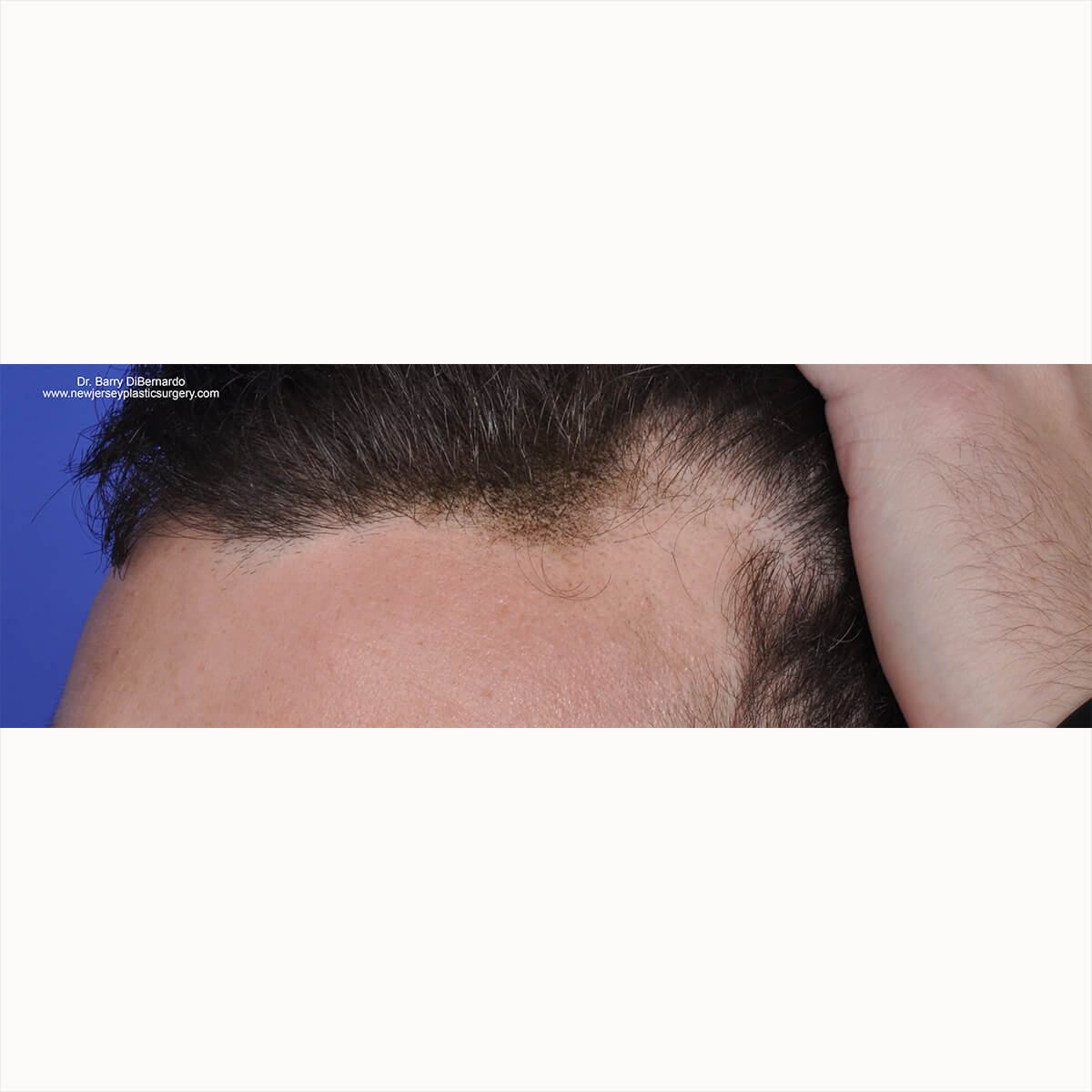
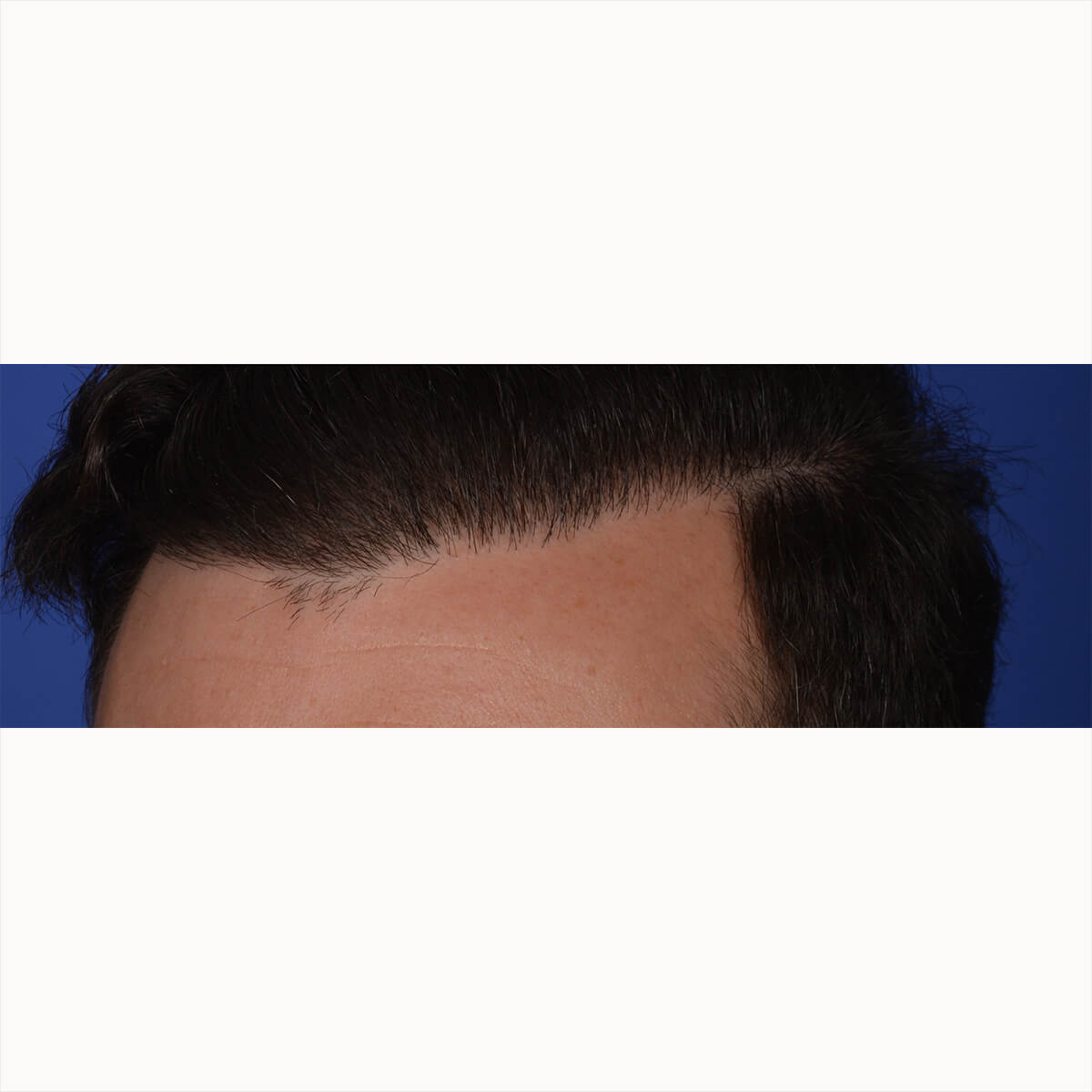
Emergence of FUE: A Game-Changer in Hair Restoration
The advent of Follicular Unit Extraction (FUE) marked a significant milestone in the evolution of hair transplant procedures. FUE, a minimally invasive hair transplant method, involves the precise extraction of individual hair follicles from the donor area, usually the back of the head.
This technique has gained immense popularity due to its less invasive nature and the ability to provide natural-looking results without leaving a linear scar.
We specialise in hair restoration surgery that includes eyebrow hair transplants and beard transplants in Dallas.
Traditional Hair Transplant Methods:
An Evolutionary Timeline
Traditional hair transplant methods have evolved significantly over the years. Prior to the development of FUE, the most common technique was the strip method, also known as Follicular Unit Transplantation (FUT).
Developed in the late 20th century, FUT involved removing a strip of scalp from the back of the head, dissecting it into smaller grafts, and transplanting these grafts to the balding areas. While effective in restoring hair, FUT often led to a visible linear scar and required a longer recovery period.
In the 1990s and early 2000s, FUT was the predominant method for hair transplantation. However, as patient demands for less invasive and more natural-looking results grew, the need for advanced techniques like FUE became apparent.
FUE: A Breakthrough in Hair Restoration
FUE emerged as a response to the limitations of traditional methods. Unlike FUT, FUE involves extracting individual hair follicles directly from the scalp, leaving virtually no linear scars.
This technique allows for a more natural-looking hairline, quicker recovery, and less post-operative discomfort. The chronological shift from FUT to FUE reflects the hair transplant industry's commitment to patient comfort and aesthetic outcomes.
The FUE Advantage in the Hair Transplant Industry
Our clinic specializes in the SmartGraft® follicular unit extraction FUE hair transplant procedure, embracing this advanced technique for its precision and patient-friendly approach.
This FUE based system represents one of the most advanced techniques in the hair transplant industry, offering a seamless and efficient process.
From the absolute exact harvesting of follicular units to the meticulous implantation in the thinning areas, FUE ensures a natural outcome and fuller hair for our patients.
FUE: Tailoring to Individual Needs
Each FUE hair transplant is uniquely tailored, considering the patient's hair type, loss pattern, and desired results. The entire process, performed under local anesthesia, is designed to be comfortable, ensuring that each transplanted hair complements the patient's existing hair and natural hair growth patterns. This patient-centric approach underlines the commitment of our hair transplant surgeons to deliver the best possible outcomes in hair restoration.
Understanding Hair Loss: The Medical Perspective
Hair Loss in Men and Women: Identifying the Causes
Hair loss, a common concern affecting both men and women, can stem from various causes. In men, the predominant cause is male pattern baldness, linked to genetic and hormonal factors.
Women, on the other hand, may experience hair thinning and loss due to hormonal changes, especially post-menopause, and other factors like stress, diet, and certain medical conditions.
The Hamilton-Norwood Scale: Measuring Male Pattern Baldness
The Hamilton-Norwood Scale is a critical tool in assessing male pattern baldness, helping clinicians and patients understand the extent of hair loss.
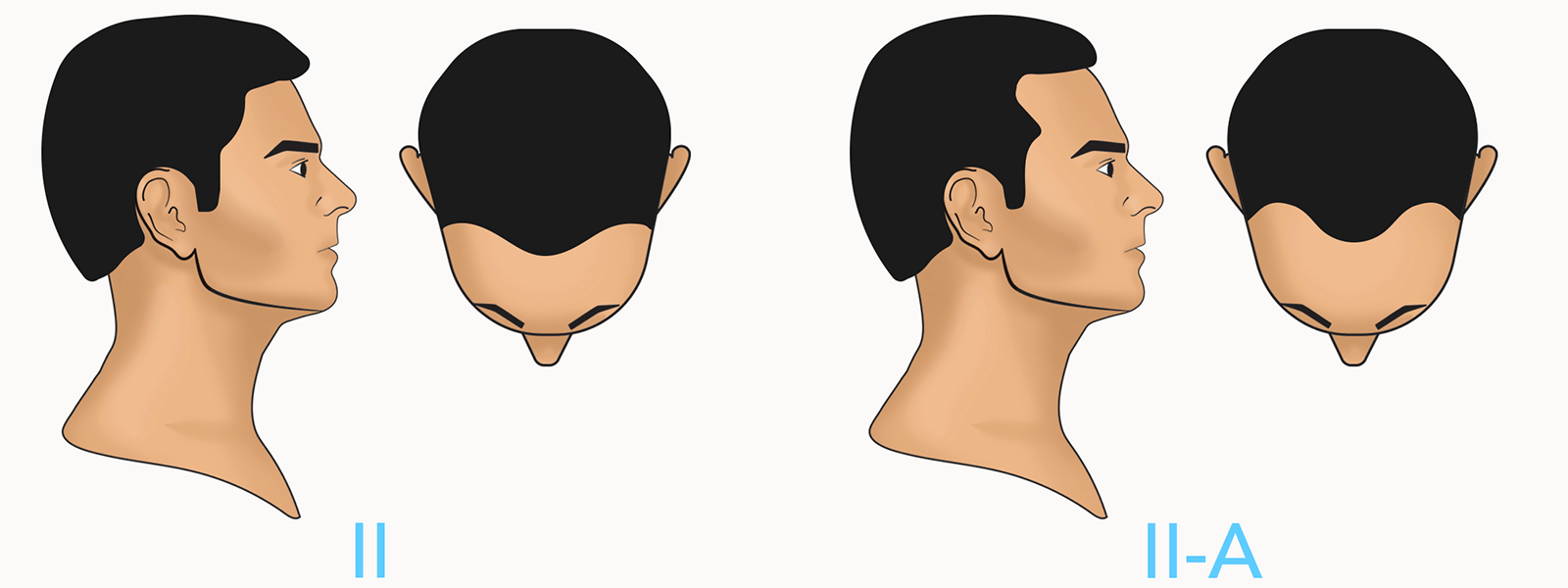
- Stage I: Represents minimal or no hair loss. The hairline is intact, and there is no significant thinning observable.
- Stage II: Slight recession of the hairline around the temples, often referred to as a mature hairline.
- Stage III: First signs of clinically significant balding appear. There may be a deepening recession at the temples and possibly early balding at the crown.
- Stage III Vertex: Hairline recession and significant balding at the crown.
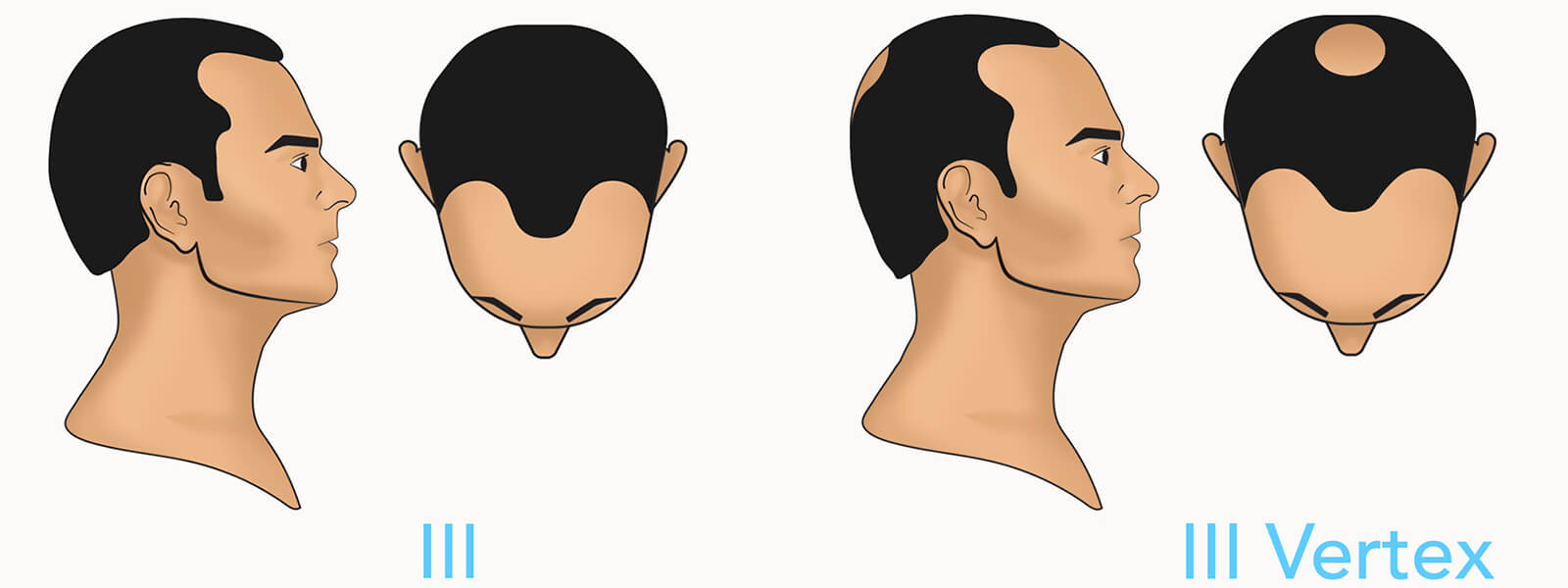
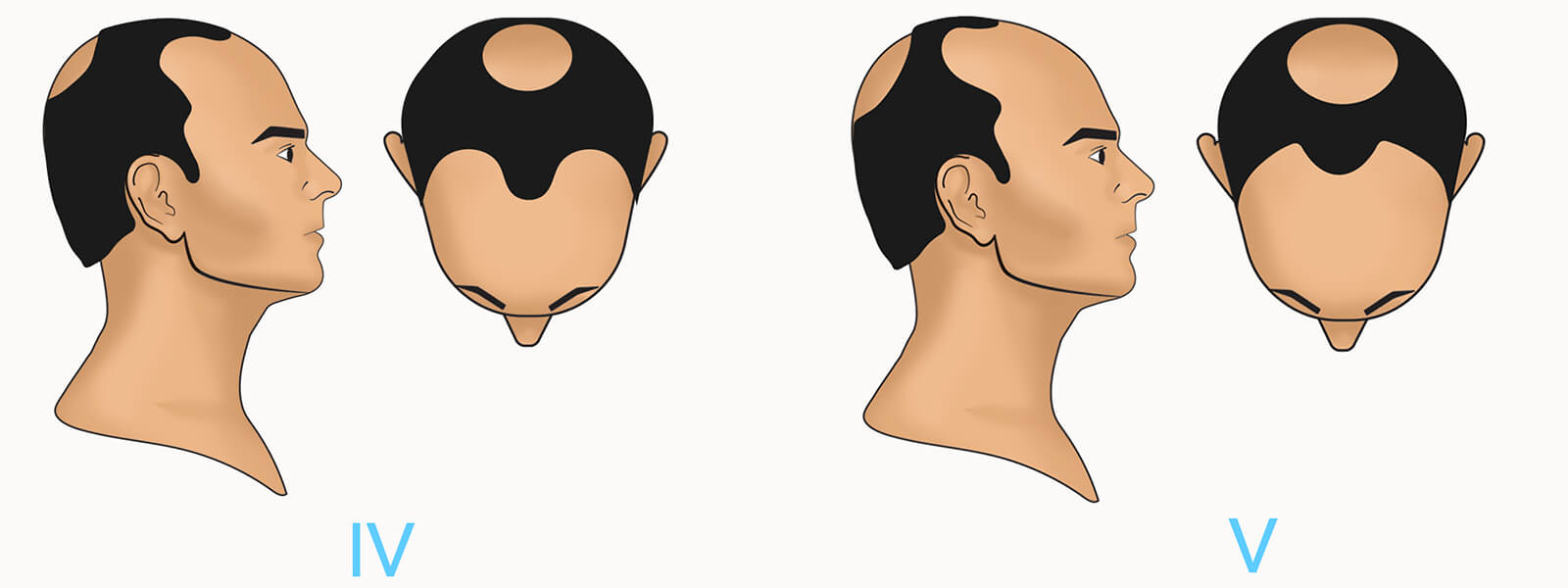
- Stage IV: More severe recession at the temples and enlargement of the balding area at the crown. A band of moderately dense hair separates the two areas.
- Stage V: Areas of hair loss at the front and crown continue to enlarge and the dividing band of hair becomes thinner and sparser.
- Stage VI: The connecting band of hair disappears, leaving a single large bald area on the front and top of the scalp. The hair on the sides of the scalp remains relatively high.
- Stage VII: The most severe stage of hair loss, only a band of hair going around the sides of the head remains. This hair may be thin and less dense.

Each stage of the Hamilton-Norwood Scale helps in determining the appropriate intervention for hair restoration, making it a vital tool in the planning of hair transplant procedures.
The Ludwig Scale: Understanding Female Hair Loss
The Ludwig Scale is an essential tool for diagnosing and assessing female pattern hair loss. It categorizes the progression of hair thinning in women into three distinct stages, offering valuable insights for effective treatment planning.
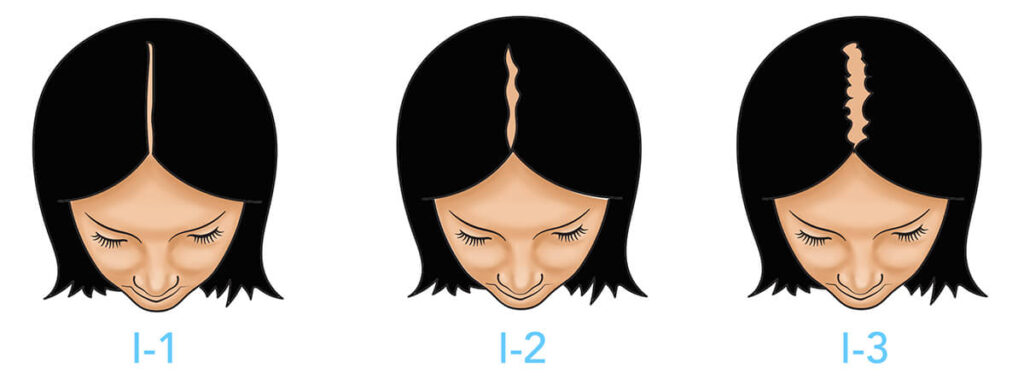
Stage I: Early Hair Thinning
In the initial stage, women may notice a slight thinning that starts with a widening through the part line.
This stage often goes unnoticed by others as the hair loss is mild.
Early intervention with topical treatments, nutritional adjustments, or minimally invasive procedures can be effective.
Stage II: Moderate Hair Thinning
The second stage is characterized by more noticeable widening of the part line and increased thinning around the crown.
Hair loss becomes more apparent, with a decrease in volume and density.
At this stage, treatments may include advanced topical therapies, laser treatments, or considering hair restoration procedures like FUE for denser coverage.
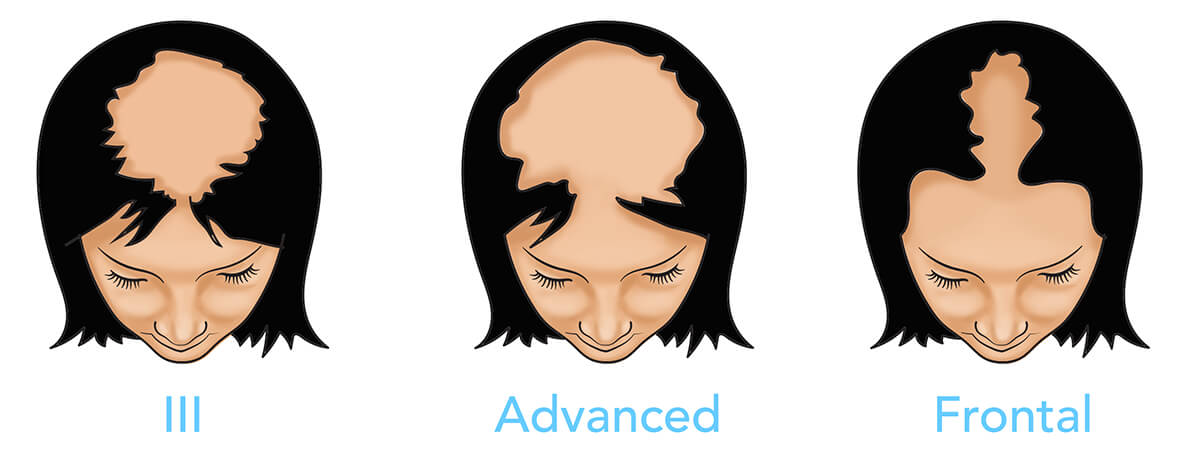
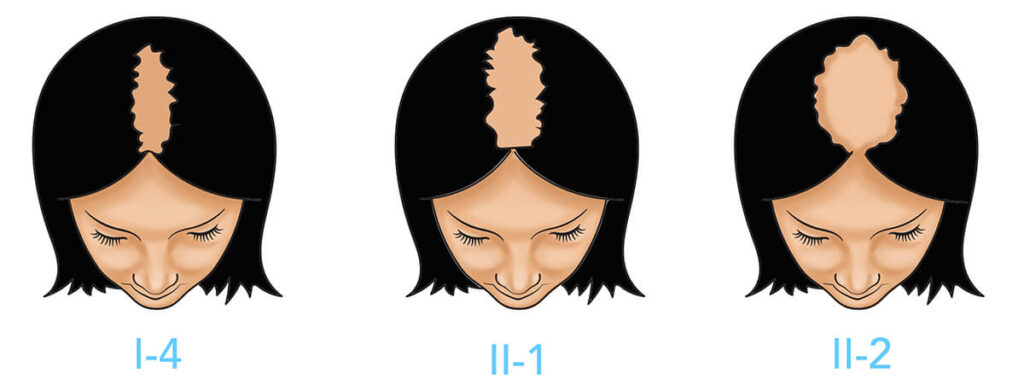
Stage III: Extensive Hair Thinning
This final stage involves significant hair thinning, often showing more scalp than hair.
The thinning is apparent and can significantly impact the individual's appearance and self-esteem.
Extensive hair thinning at this stage may require more comprehensive hair restoration solutions, including FUE or other surgical options, combined with medical treatments to enhance and maintain hair growth.
Understanding the severity of hair loss using the Ludwig Scale allows for a more personalized approach to hair restoration in women. It helps in determining the most suitable treatment options, ensuring that the interventions align with the specific needs and expectations of each individual.
Common Causes of Hair Loss
Environmental factors, such as exposure to pollutants, stress, and diet, play a significant role in hair loss. Additionally, genetic predisposition is a major factor, especially in male pattern baldness, where a history of baldness in the family can increase the likelihood of experiencing similar issues.
The Progression of Hair Loss with Age
Hair loss tends to worsen with age, particularly in cases of genetic hair loss. However, it can stabilize at a certain point, depending on the individual's genetic makeup and overall health. Regular consultation with a hair transplant surgeon can provide insights into the progression and potential stabilization of hair loss.
Hair Restoration: A Solution for Thinning Hair
For those experiencing hair thinning and loss, hair restoration, especially through procedures like follicular unit extraction (FUE), offers a viable solution. These advanced techniques ensure minimal downtime and natural hair growth, helping restore a fuller head of hair.
Ensuring Healthy Hair Growth Post-Procedure
Post hair transplant surgery, maintaining healthy hair growth is crucial. Patients are advised to follow their surgeon's guidelines, including proper care of the transplanted hair and the donor site. Additionally, adopting a balanced diet rich in vitamins and minerals can support new hair growth and overall scalp health.
The Promise of Advanced Hair Restoration Techniques
With advancements in the hair transplant industry, such as the FUE technique and minimally invasive procedures, individuals now have access to state-of-the-art hair restoration options. These techniques promise a natural outcome and have transformed the approach to treating hair loss, offering hope and positive results to those affected.
Frequently Asked Questions about Hair Transplants and Follicular Unit Extraction with SmartGraft
What is the difference between a SmartGraft hair transplant with FUE and other types of hair transplant procedure?
SmartGraft represents an advanced development in hair transplant technology. Unlike traditional methods that involve removing a large strip of hair, SmartGraft utilizes FUE (Follicular Unit Extraction) technology. This means individual hair follicles are extracted and transplanted, which significantly minimizes scarring and recovery time.
the Key Benefits of SmartGraft
SmartGraft offers several advantages:
Natural-Looking Results
Utilizing your hair ensures the results blend seamlessly.
Minimal Scarring
The technique avoids the linear scar common with strip methods.
Convenience
The procedure is completed in a single office visit, typically within about five hours.
Rapid Recovery
Patients often return to normal activities, including hair washing, within days.

